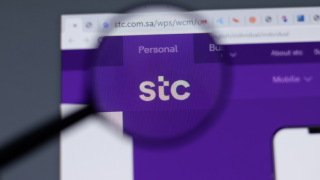Economies up and down the coast of east Africa are eagerly awaiting the launch of a number of new cable systems, set to light up the region after years of online obscurity.
The intent behind all these new systems (see p13 for details) is to haul African traffic up through the Middle East and on to Europe, or to meet other cable systems in the Gulf region where it can be directed to Asia. “Several cables are being upgraded, built, and planned along the east coast of Africa and other strategic locations between Europe and the Middle East, India and Asia over the next couple of years,” says Peter Barrasso, executive director for undersea cable engineering with AT&T. “The goal of all these systems is more diversity, expanded reach into the Middle East, east Africa and South Africa, and more capacity as carriers and businesses require higher speed trunks. In addition, the diverse landing locations into the Middle East countries and Africa will create more low-latency connections to growing markets.”
Welcome progress
In the light of Africa’s historic reliance on expensive satellite links for any sort of international reach, these developments are welcome progress.”The new cables connecting the Middle East with East Africa have been invested in by a lot of regional players, not just the usual big international players,” says Andreas Hipp, CEO of Epsilon Telcommunications. “The cable club has got new members, from places like Oman and Djibouti. That’s a healthy development, and will help to lower prices.”
Less clear at this juncture, with all these new systems still under construction or at advanced planning stage, is which of the regions they touch will emerge as winners. The probability is that the actual cables will coexist in reasonable harmony, each finding its own base of customers and between them bringing welcome redundancy.
The hottest competition may be between rival landing stations and between powerful regional operators keen to see this new flow of traffic driven onto their assets. There are a number of possible places, both up and down the African coast and around the Middle East, that are potentially positioned to emerge as major traffic hubs, or consolidate the global status they already enjoy. So who will prevail?
What about hubs?
The Persian Gulf’s principal existing hubs are Jeddah in Saudi Arabia and Fujairah in the United Arab Emirates, whilst across the Red Sea, Egypt offers cable owners Suez and Alexandria.
“With most traffic out of this region heading for Europe or the US, Egypt will be one of the main beneficiaries of the increased capacity coming out of east Africa,” believes Mohsen Malaki, manager with Dubai-based analyst company Delta Partners. “Less so the Gulf – although companies like Etisalat will be big users of these new cables because of the business they have across Africa.”
The real revolution will be in Africa itself, says Malaki: “For a country like South Africa, these cables will provide the diversity they need,” he says. “For some east African countries, this will be the first time they are not relying on satellite.”
He foresees that a lot of east African economies will be looking for a route via the Middle East to take advantage of the global business process outsourcing market: “They are keen to be emulating India, but in a smaller way,” he says. “English is spoken in a lot of these countries, so they will be looking to capture a small part of the world BPO market in Europe and the US.”
The chief contenders on the east African coast for hub status are Port Sudan, Mombasa in Kenya and Dar-es-Salaam in Tanzania. There may be room for all three if traffic volumes achieve hoped-for heights.
But not all market watchers are convinced that Africa is yet capable of generating the sort of traffic that will put any landing there on the world stage. “Traffic going to Europe via the Middle East won’t suddenly make Kenya a hub, other than perhaps for its own region,” says Alan Mauldin, research director with telecoms industry consultancy Telegeography. “The point of all these cables, at this stage, is simply to get traffic out of Africa and on to the rest of the world, not relying on a purely satellite solution any more.”
Ambitious operators
Of all the potential African hubs, Port Sudan arguably presents the most interesting possibilities. Sudan is served by some ambitious operators. Incumbent Sudan Telecom is highly active outside of its domestic market. And alternative player Canar, part-owned by Etisalat, gives it a good run for its money with services spanning voice, data, internet and satellite. It operates 3,500km of optical fibre network across Sudan, and is a beacon for Sudan’s land-locked neighbours.
The Etisalat connection with Sudan, and its stake in a number of other African countries, underpin a broader plan to distribute African traffic around the world via the UAE. Naturally STC has similar notions of driving traffic onto its own network via Jeddah. Egypt’s Orascom has also announced plans to acquire a bigger stake in African telecoms, so can be expected to become another part of the puzzle.
The virtuous circle of Middle East operators investing in neighbouring markets, thus putting pressure on incumbents to follow suit, is spilling over into Africa, observes Paul Joseph, regional manager for the Middle East with Sprint International Markets. “We’re seeing this in Saudi Arabia where Batelco is investing, Zain also,” he says. “So as not to lose revenue, STC has got to invest too, and so has bid for a mobile licence in Bahrain. And with Du in the UAE, Etisalat has changed its face completely and is now competing in Africa.”
As traffic heads out of Africa and through the Middle East, there are also question marks further upstream over where it should land in Europe. Dimitris Michalakis, senior marketing manager with OTEGlobe, the international wholesale division of Greek incumbent OTE, believes that now, with a wealth of new cable systems disrupting the old order, is the right time for a reappraisal.
Alternatives in Europe
“We are looking to connect Greece with the Middle East at the moment,” he says. “We are in active discussions with a number of major consortia. We want to attract backhaul traffic to our network from the Middle East. At the moment, two countries dominate traffic from the region onto Europe – France and Italy. We want to position Chania in Crete as an alternative landing to Marseilles and Palermo, as a third option for traffic terminating in locations in western Europe.”
He says OTE can commit to what he calls “some extremely competitive pricing”.”Our competitive advantage will be the totally diverse route we offer,” he says. “We want to attract new traffic as well as existing traffic. But it takes time to break a monopoly.”
Hipp of Epsilon also believes there is a hunger for wider choices that new cable options will nourish: “We talk to most of the operators in the Middle East, especially the Gulf region, and support them when they need landings in Europe and Hong Kong,” he says. “We’re seeing lots of growth especially among mobile operators and local incumbents looking to open PoPs in Europe and Asia. They want more than just the sort of partnership with BT or France Telecom they have been offered in the past, and are growing in confidence. Is a deal they negotiated 10 years ago still worth it? Maybe not.”
Andrew Grenville, executive vice president for international and wholesale business with alternative UAE player Du, looks to the future and sees the Africa to Middle East route continue to be a battleground for competing interests for a while to come. “The Red Sea and east Africa will remain one of the most preferred regions for concentration of undersea cables and connectivity,” he says.
As well as the four or five new cables on the horizon, he believes further systems are being planned for future deployment: “This will continue till there is progress on a terrestrial route of some form from the Middle East to Europe,” he says
The major cables set to connect Africa, the Middle East and Europe The first new cable system to tackle east Africa’s capacity drought will be Seacom, planned to go live in the summer of 2009 and linking South Africa, Madagascar, Mozambique, Tanzania, Djibouti, Kenya and Egypt before heading to both Mumbai in India and Marseilles in Europe. Seacom’s owners are claiming that they will be able to offer carriers in the countries they land in something in the order of a 90% reduction in capacity pricing over that they currently enjoy. |




